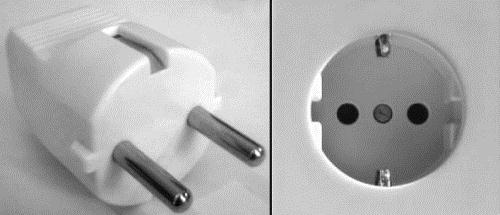@tuga - same as Hong Kong, then, which also drives on the left. I asked once what this meant at the border with the PRC, and the answer I got was "the way they drive up there, left or right doesn't really matter".
Italy still has two plug types in use both look the same (three pins in a line) until you put them side-by-side and see that one has wider pin spacing than the other. The difference is from the old days when houses were wired with a low-voltage (125 V) lighting supply ("
luce") and a higher-voltage (220 V) appliance ("
forza") supply that were billed at different rates. These days, houses are wired with a single 220 V supply throughout, but in older places (and that definitely covers rural holiday accommodation), you'll still see both varieties and the occasional Schuko.
@Seeker_UK yes, it's to do with fuse safety. If the fuse is on the N leg, and it blows, then no current flows because the circuit is broken, but the equipment remains live because the L input remains connected to the supply. In the "correct" orientation, the fuse blowing disconnects L from the device (N remains connected, but it is effectively at 0 Volts, which is not
quite the same as your safety ground, but it's near enough).
As I noted above, though, most equipment comes with an internal fuse just inside the L input on the power-supply, so it's not really an issue (Also, type BS plugs tend to be fitted with 13 Amp fuses by default, which is plenty enough current to fry an electronic device and still not blow the plug fuse)



